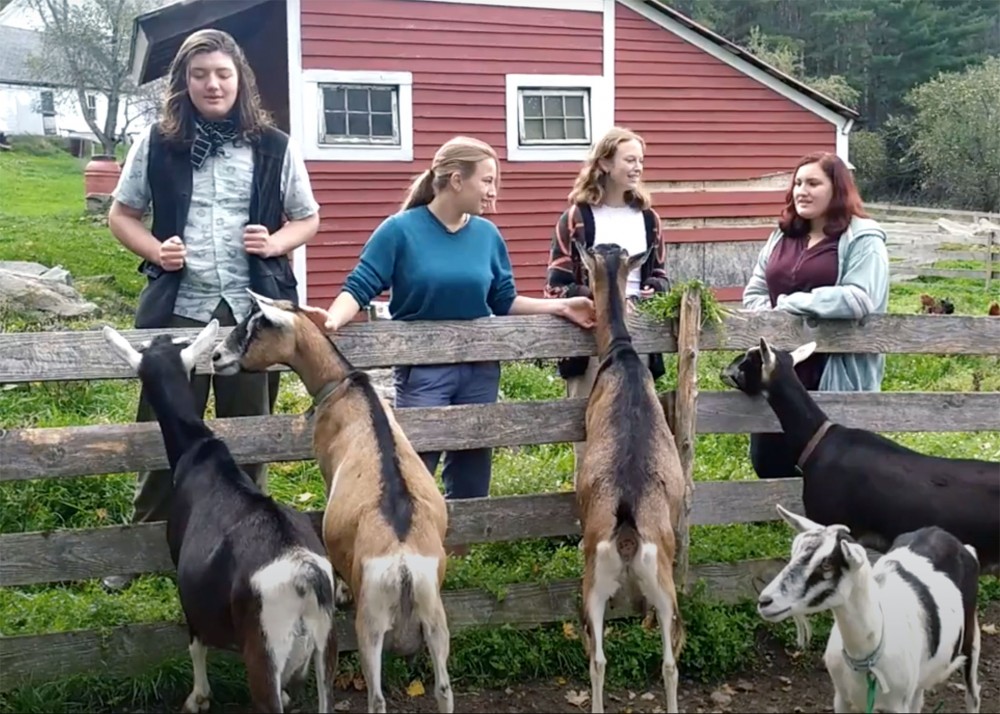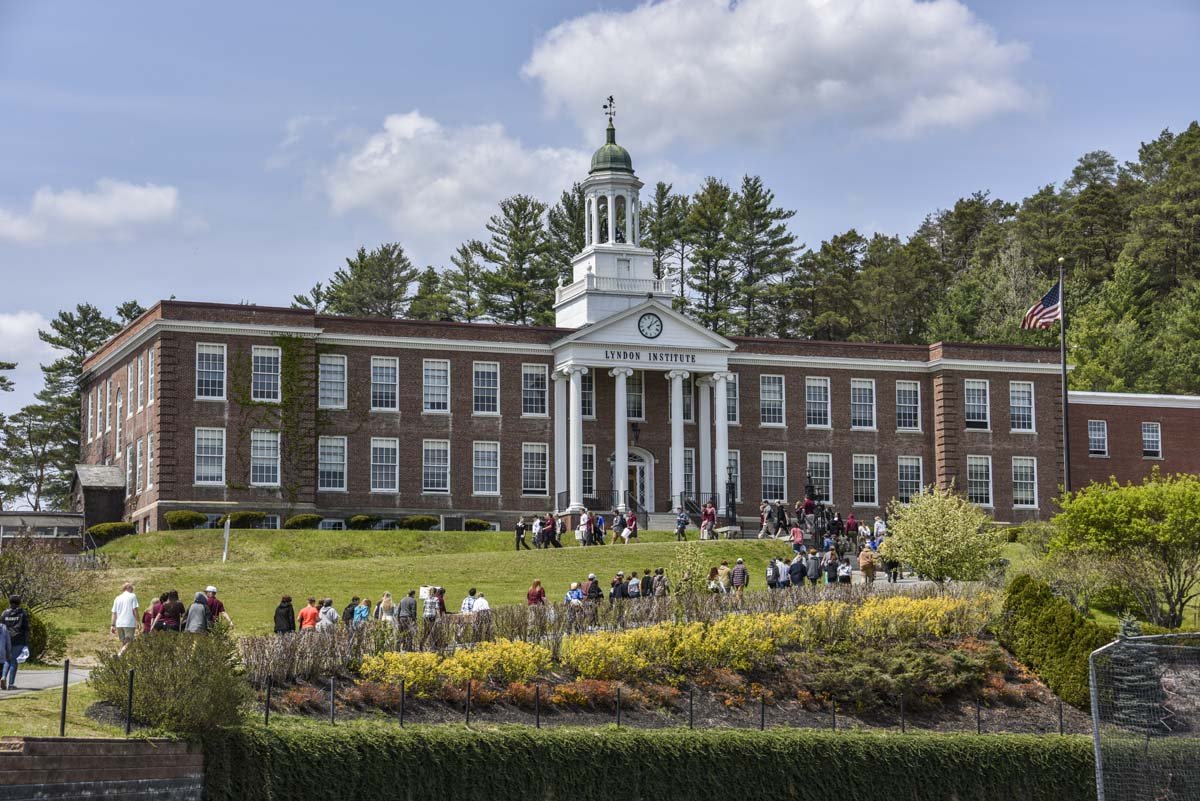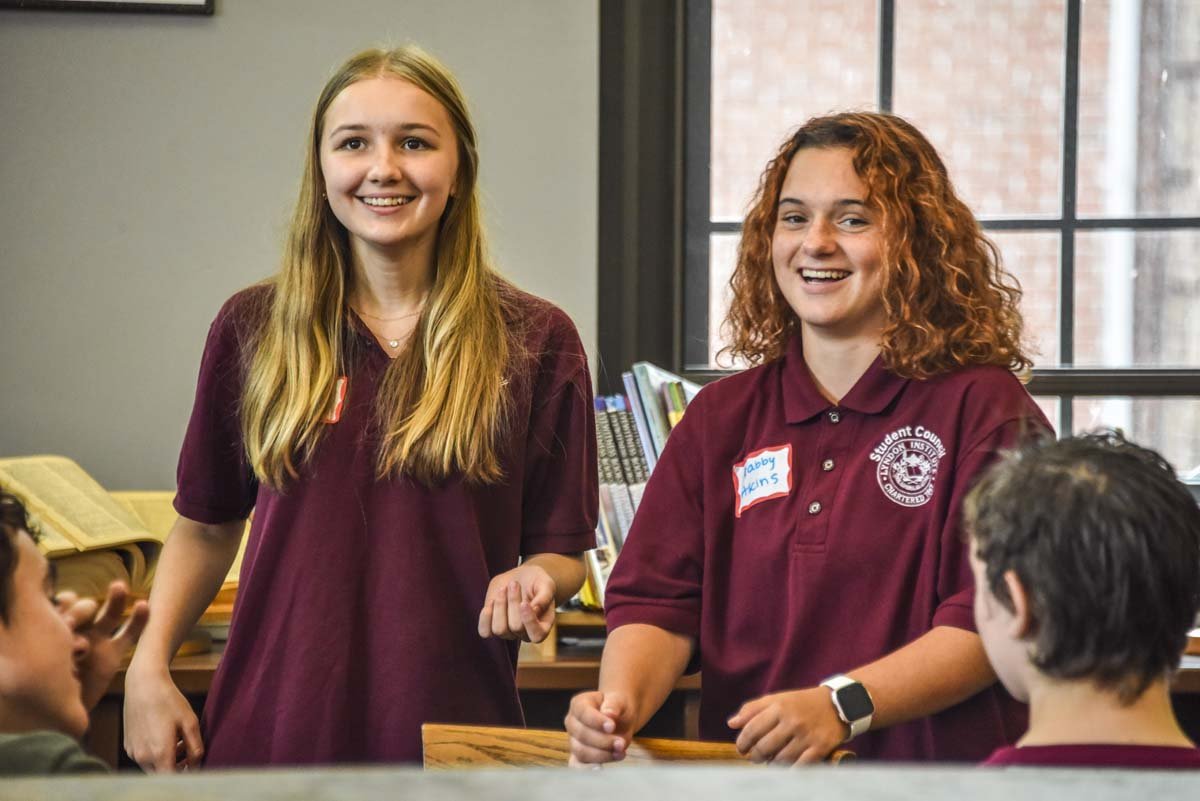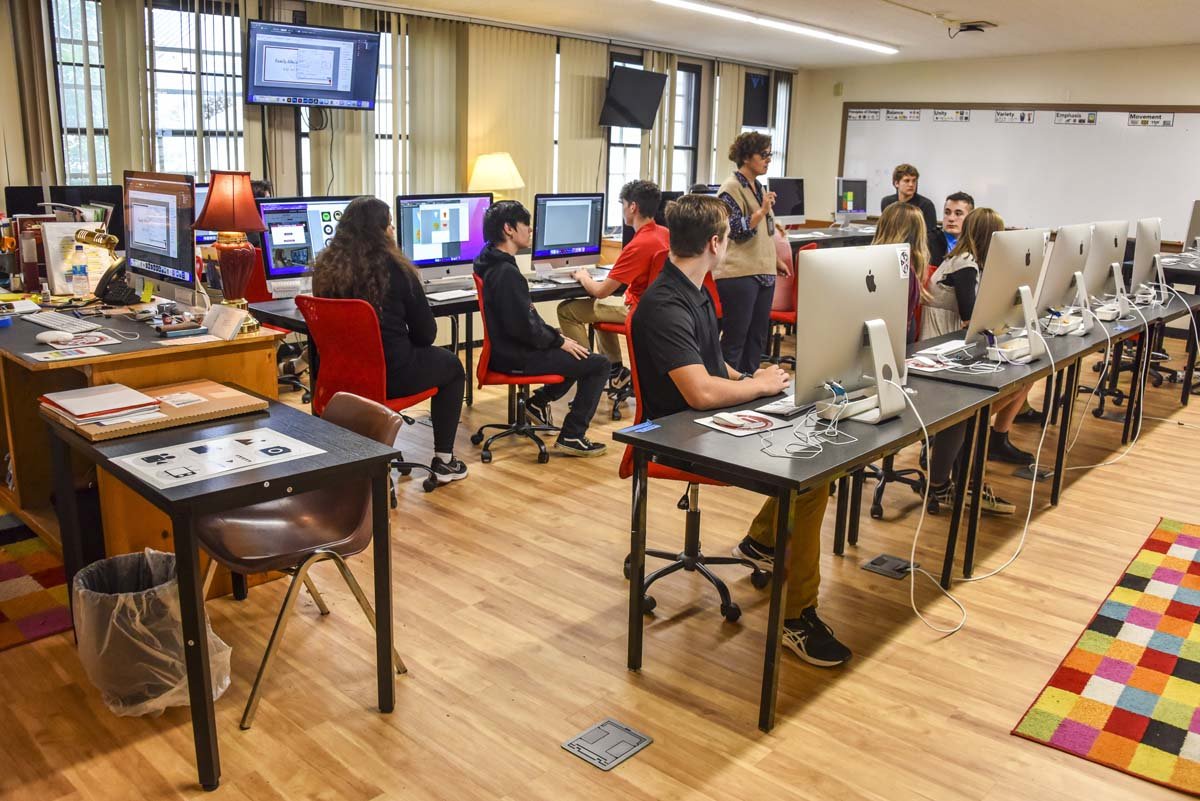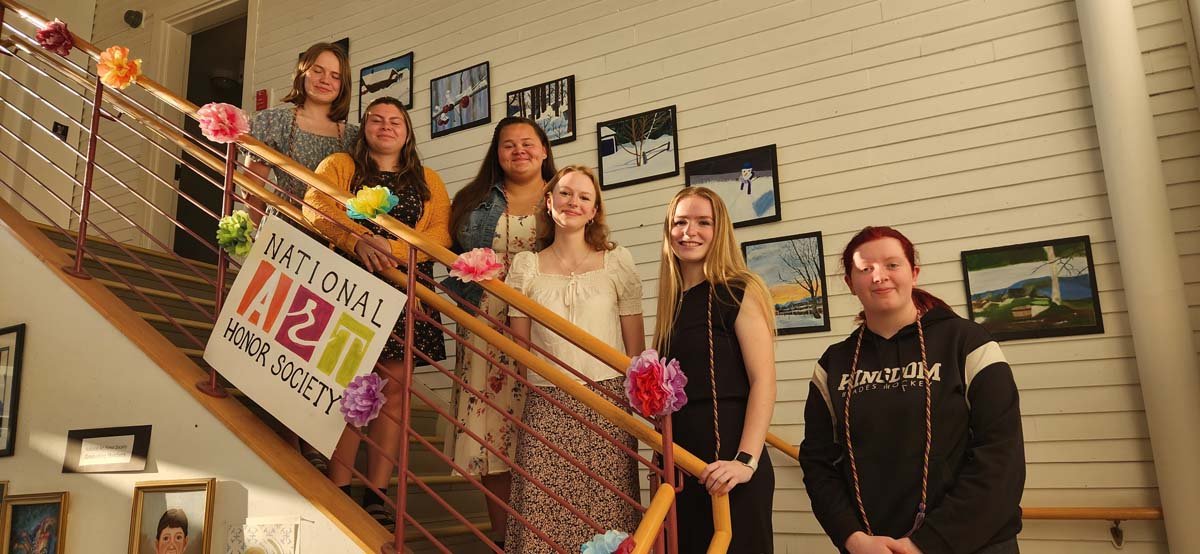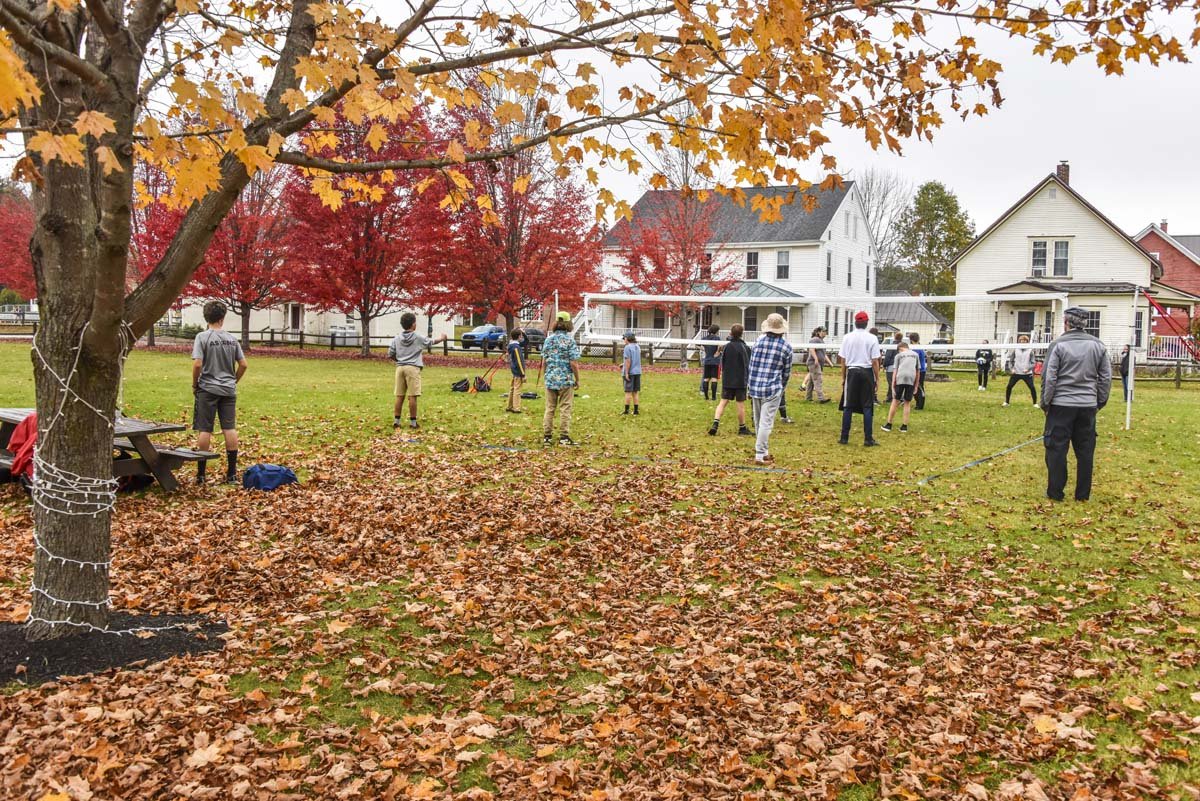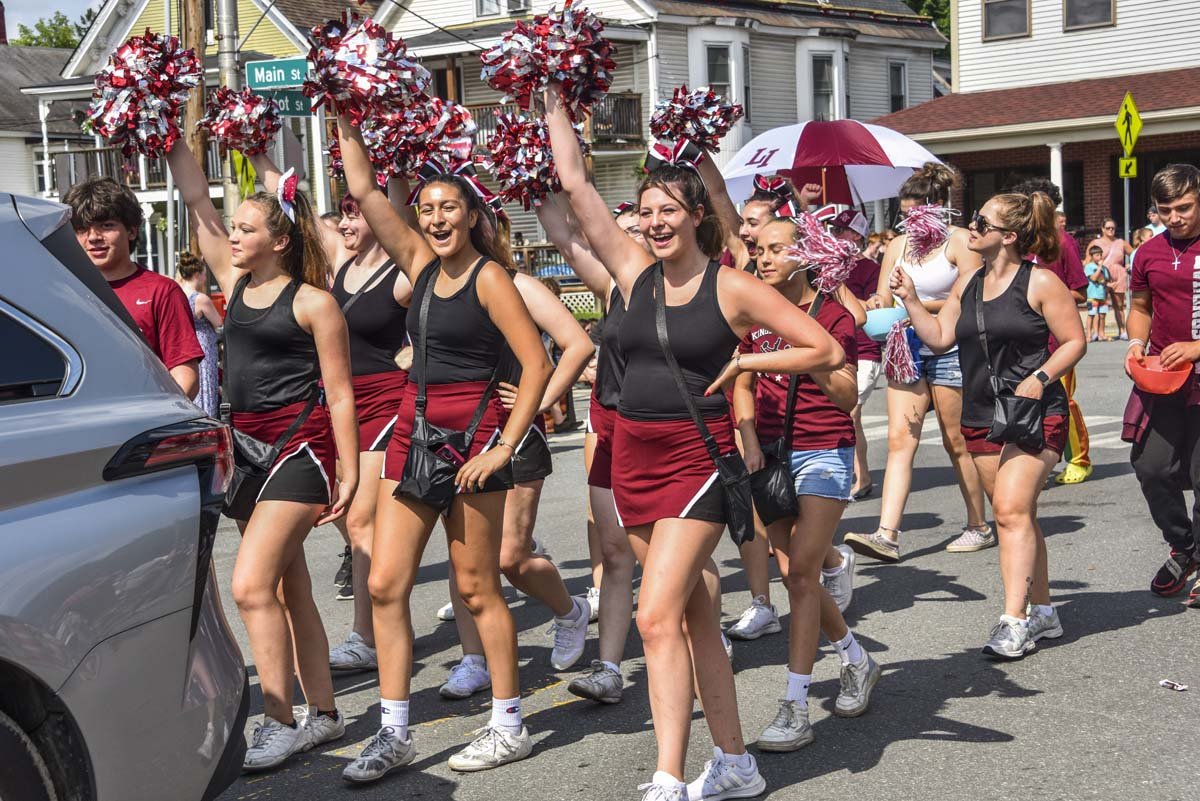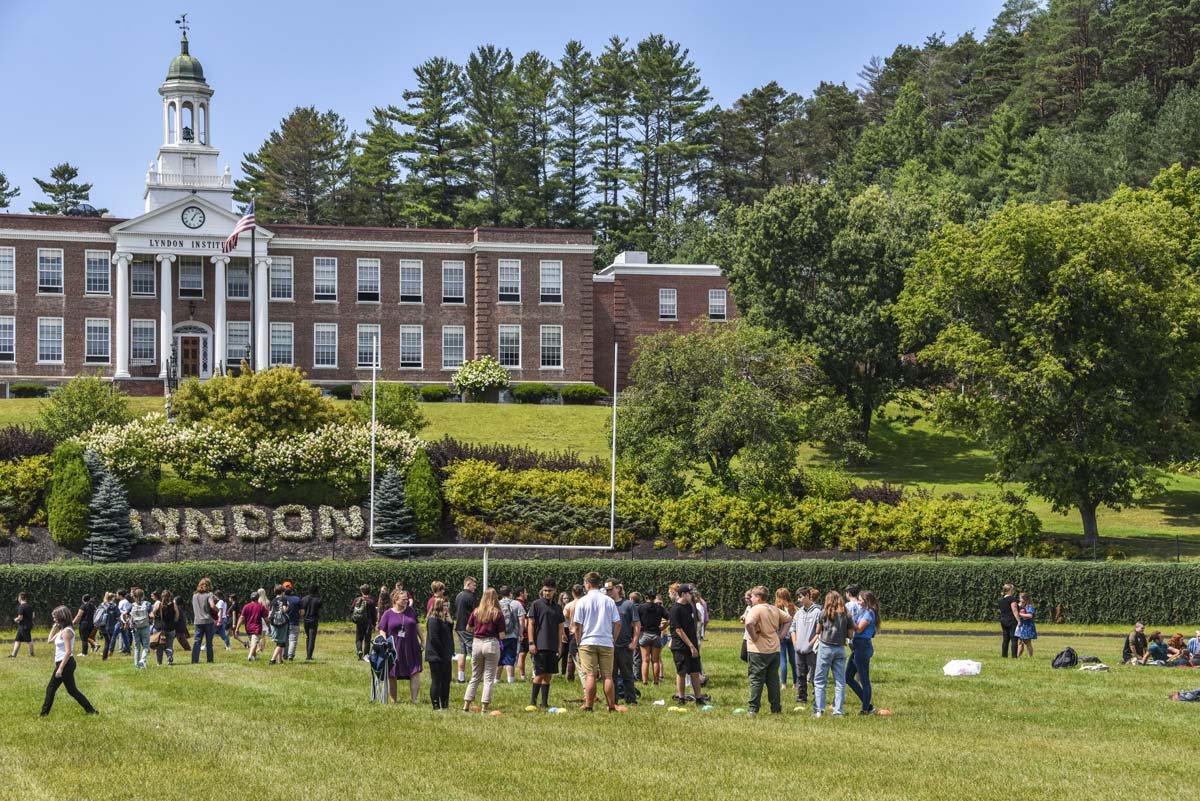- Our School
- Admissions
-
Academics
- Divisions and Faculty
- Commencement 2024
- January Term
- International Program (ESOL)
- College and Career Counseling
- Upward Bound
- Library/Monahan Academic Commons
- Career/Technical Education
- Lyndon Learning Collaborative
- Flexible Lyndon Institute Pathways (FLIP)
- Specialized Instruction
- Adult Continuing Education
- Lyndon Institute Course Catalog
- Student Services
- Arts
- Athletics
- Campus Life
- Support LI
- Alumni
« Back
A Goat Song for Autumn
November 8th, 2021
By David Stahler Jr.
The first day of October brings a perfect fall morning to the Kingdom. The foliage, normally peaking by this date, is lagging a little this year, but there’s still plenty of color along the hillsides as the Lyndon Institute bus makes its way up Old County Road in Waterford toward our destination—Crooked Mile Cheese. My AP Language and Composition students point out the gorgeous view of the Moore Dam Reservoir in the distance. For most of them, it’s their first field trip since COVID and everyone is in a good mood. The fact that they’re about to pet some baby goats only adds to the excitement.
Goat farmer and cheese-maker extraordinaire Roberta Gillott and her husband, John, greet us as we get off the bus. A woman with a sharp wit and an infectious laugh, she immediately puts the students at ease. I’ve known Roberta for quite a while, ever since she spent a year teaching Spanish and Social Studies at LI. Back then, her handful of goats and the chevre she made from their milk was merely a hobby; in the seven years since, it’s become a full-fledged enterprise—forty-one goats make up the couple’s herd, nineteen of which they milk twice daily, with another nine soon to be added to their milking total.
AP Language and Composition is based on the teaching of nonfiction, with a focus on rhetoric and style. Students learn to analyze texts not so much in terms of what the authors are saying but how they are saying it. We begin the year with a unit I call “Nature and Perception,” a series of readings thematically connected through reflections on our relationship with the natural world and how we use writing to explore and understand it. As we work our way through contemporary essays from writers like Annie Dillard, E.O. Wilson, and Terry Tempest Williams, paired with classics from the likes of Henry David Thoreau, Virginia Woolf, and Mark Twain, students are also assigned a longer read: Brad Kessler’s Goat Song.
Kessler’s 2009 memoir—the story of his first year of moving to Vermont, raising goats, and making cheese—is a masterpiece of nonfiction that I’ve been using in the classroom for the better part of a decade. Goat Song takes an interdisciplinary approach to its subject, blending history, literature, culture, politics, religion, anthropology, etymology, biology, and chemistry into its compelling narrative. In terms of the writing, Kessler’s prose manages to be both crisp and clear and at the same time lyrical, with striking imagery and beautiful pastoral meditations on nature and our relationship with the animals we raise and the food we eat. In short, it’s a great model for students in its structure and style and a perfect complement to the essays we deconstruct in class. It’s also a great excuse to make an excursion to Crooked Mile Cheese.
Roberta’s farm is neat and tidy, with a small red barn for the goats (“More a converted shed,” she says with a laugh), a smaller adjacent building where her goats’ milk is pasteurized and turned into a range of different cheeses, from creamy chevres to solid tommes, and an even smaller shed at the roadside that houses their self-serve store for those who can’t make it to the weekly farmers’ markets Roberta attends in St. Johnsbury and Littleton. A fenced enclosure for the herd extends from the barn, and in the hayfield across the road lies a moveable paddock for the yearlings. Apple trees, vegetable gardens, stacked wood-piles, hay and equipment sheds, and a greenhouse complete the setting, as does an old farmhouse that once served as the town clerk’s office.
Over the next hour, students explore the farm as Roberta guides them through the process of raising goats and making cheese.
First up is the main barn. We enter through the milking parlor, greeted by the sweet smell of milk and the sound of the pump as Roberta’s husband tends to four goats at a time, gorgeous black and tan registered American Alpines who stand on a raised platform chowing down on grain as they’re milked. From there, we move into the main section of the barn, a collection of large stalls that house different groupings of goats. Amid the low light and even lower rough-cut beams, surrounded by the pungent smell of sawdust and manure, the kids (my human ones) get their first close-up look at the goats while Roberta tells the story of how her family got into the business.
“We home-schooled our children,” Roberta explains. “My daughter wanted a cow, and we ended up settling on a couple of goats. They’re smaller! Having animals to take care of was really just a way to get them up in the morning,” she jokes. “Then over time, it took off.”
From the barn, we move to the cheese building—after a brief but close encounter with a flock of honking gray geese that leaves the students alternately wide-eyed and laughing—where Roberta shows them the production room. We take turns navigating the small building, looking through the window into the sterile inner chamber at the stainless steel pasteurization vat and at the racks where sacks of chevre drain and filled molds of harder cheese dry and age.
To manage a farm of forty-one goats, Roberta’s husband focuses on the milking chores, while she devotes the bulk of her time to crafting the cheese—1400 pounds a year. “Keeping up with the steady flow of milk is a challenge,” she tells us. “Some days I start early in the morning and go late into the night.” Making cheese is both an art and a science. Roberta keeps records on every batch, carefully monitoring temperatures and weights, making constant adjustments, and experimenting with different varieties of cheeses for the marketplace. “So many variables go into the process, depending on the time of year—the goats’ different lactation stages after giving birth, what kinds of grasses and herbs are they eating—all kinds of things can impact the flavor and texture of the cheese.”
Students pepper Roberta with questions, drawing from their reading of Kessler, comparing his experiences with hers. Though Roberta’s operation is on a larger scale than the one described in Goat Song, it’s small enough that she shares many of the same attitudes and values with Kessler—a focus on sustainability, on a personal connection with each animal, on high-quality production with the freshest ingredients in a closely controlled, small-batch process.
The visit finishes with a walk across the road to pet the baby goats—as adorable as you would imagine—as well as a stop into the store where we load up on cheese and bulbs of the fresh garlic Roberta grows in her garden.
But not before a special performance. Many of the students in the class are also members of Lyndon Institute’s select chorus and its new treble ensemble. After a little cajoling, a group gathers at the fence of the main paddock to serenade the goats with an a cappella rendition of “Parting Glass,” an ancient Scottish tune of farewell. The goats gather before the singers in curiosity, seemingly as enchanted by the voices as Roberta and the rest of us are.
On the ride back, one of the students breaks into his carefully packaged wedge, a mild cheese in both flavor and texture called Shadow Lake in honor of the nearby landmark. He breaks off a nibble and savors it—his first-ever taste of goat cheese.
“What do you think?” I ask.
He nods. “Different from what I expected. It’s good!”
Our trip to Crooked Mile Cheese isn’t just a fun diversion on a beautiful Friday morning in autumn. It’s a chance for the students to make a real-life connection to the literary world they’ve been exploring for the last month, to see first-hand how a similar Vermont couple spends their days in communion with their environment, following a lifestyle that is both a passion and a way to make a living, feeding themselves in the process of feeding others. Our visit is brief but long enough to make our text more vivid and enduring, to better savor the flavor of both the writing and Roberta’s cheese.
Posted in the category Front Page.

